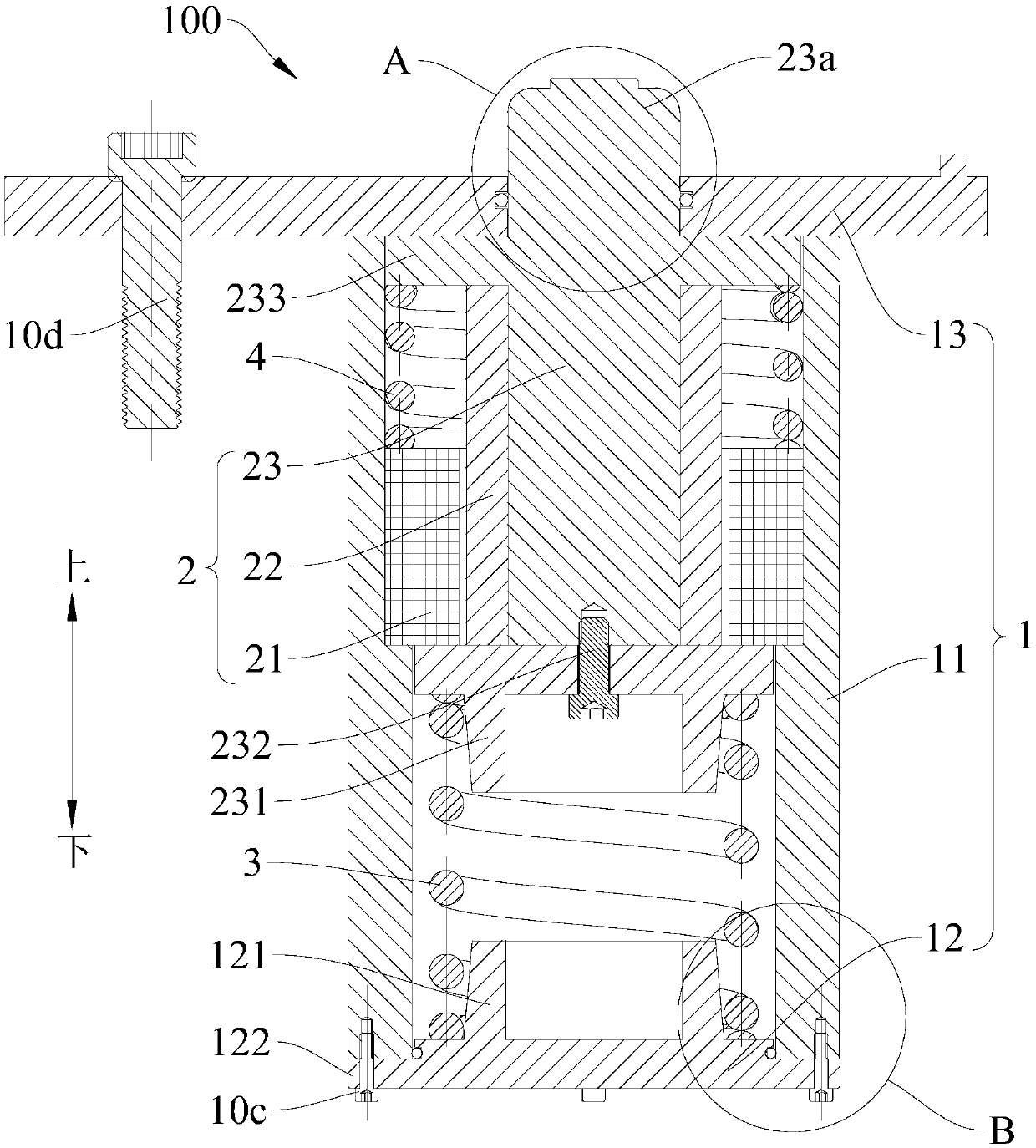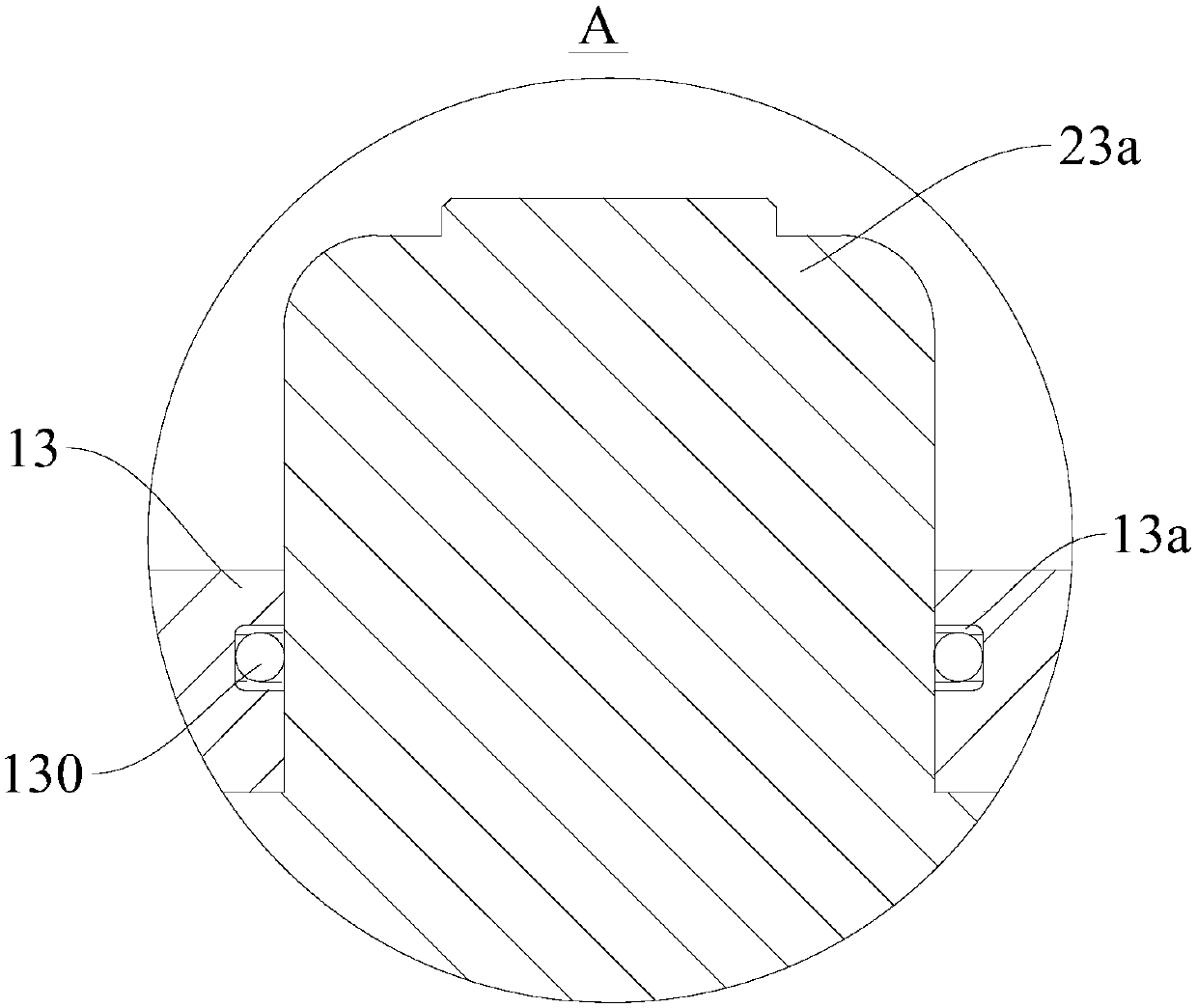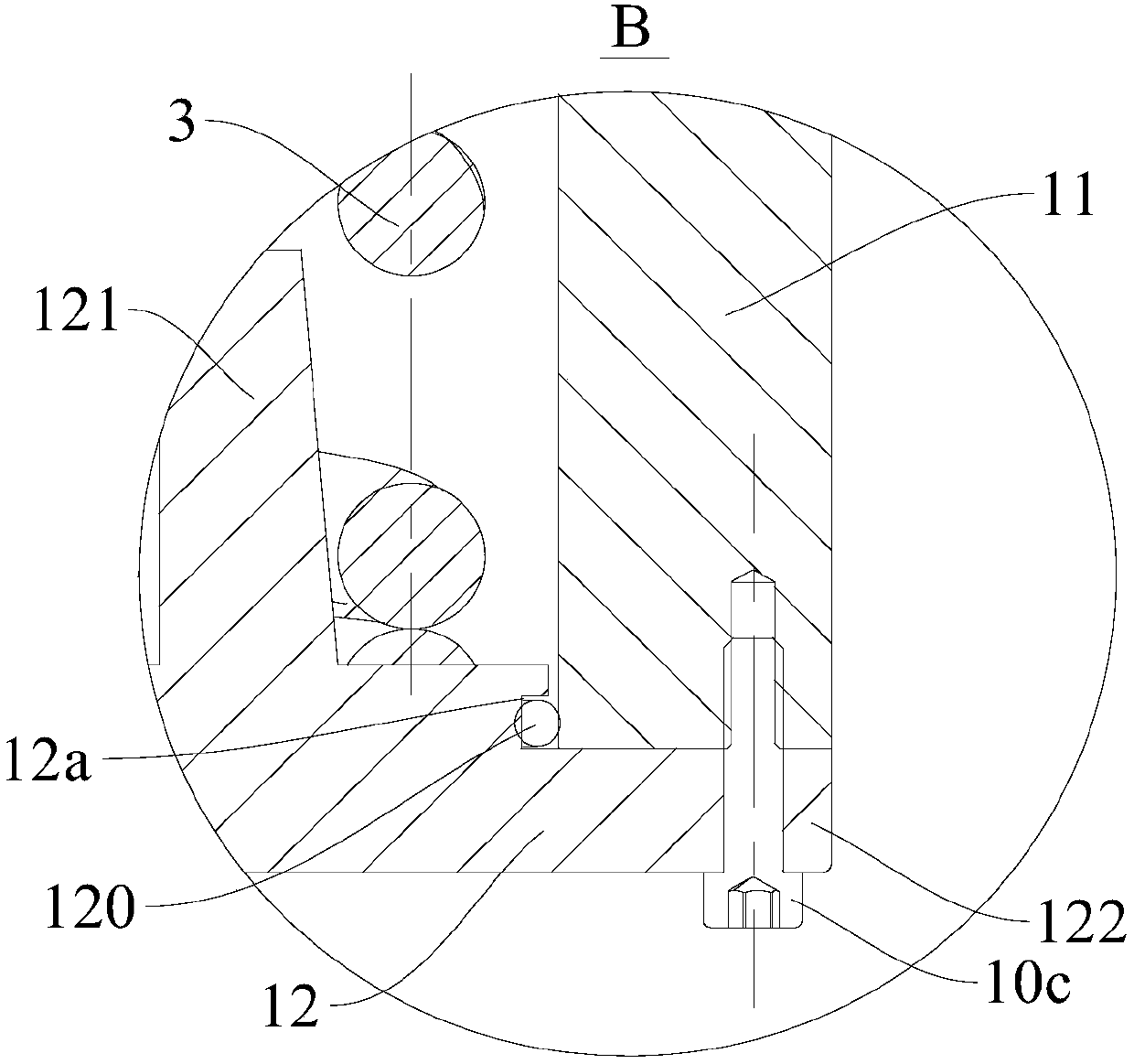Pedal-feeling simulator for vehicle and vehicle with pedal-feeling simulator
A simulator and pedal technology, applied in the field of vehicles, can solve the problems of poor braking performance, slow response speed of the braking system, and inconvenience for drivers, and achieve the effects of fast braking response, easy design requirements, and reduced burden.
- Summary
- Abstract
- Description
- Claims
- Application Information
AI Technical Summary
Problems solved by technology
Method used
Image
Examples
Embodiment 1
[0070] In this example, if Figure 1-Figure 7As shown, the pedal feel simulator 100 includes a housing 1 , a linear motor 2 , a first elastic member 3 and a second elastic member 4 .
[0071] The housing 1 includes a main cylinder body 11, a bottom cover 12 and a fixed plate 13. The main cylinder body 11 is roughly formed into a cylindrical structure, the axial ends of the main cylinder body 11 are open, and the bottom cover 12 is arranged on the axial direction at one end (for example, if figure 1 middle lower end), the fixed plate 13 is located at the other axial end of the main cylinder body 11 (for example, as figure 1 The upper end of the middle), so that the bottom cover 12, the main cylinder body 11 and the fixed plate 13 jointly define a closed accommodation space. Specifically, such as Figure 1-Figure 6 As shown, a first connecting portion 111 is formed on the upper end of the main cylinder body 11, and the first connecting portion 111 protrudes outward along the ...
Embodiment 2
[0080] Such as Figure 8 As shown, the structure of this embodiment is substantially the same as that of Embodiment 1, wherein the same components use the same reference numerals, the difference is: when the driver does not step on the pedal 101 and the pedal feeling simulator 100 is in the initial position, the first Both the elastic member 3 and the second elastic member 4 are in a natural state, the two ends of the first elastic member 3 are respectively against the inner wall of the housing 1 and the second end 23b of the motor push rod 23, and the lower end of the second elastic member 4 is in contact with the second end 23b of the motor push rod 23. The inner wall of the housing 1 is in contact with each other, and the upper end of the second elastic member 4 is spaced apart from the second end 23b of the motor push rod 23 . When the driver steps on the pedal 101, the first elastic member 3 first works to apply an elastic force to the motor push rod 23. When the displace...
PUM
 Login to View More
Login to View More Abstract
Description
Claims
Application Information
 Login to View More
Login to View More - R&D
- Intellectual Property
- Life Sciences
- Materials
- Tech Scout
- Unparalleled Data Quality
- Higher Quality Content
- 60% Fewer Hallucinations
Browse by: Latest US Patents, China's latest patents, Technical Efficacy Thesaurus, Application Domain, Technology Topic, Popular Technical Reports.
© 2025 PatSnap. All rights reserved.Legal|Privacy policy|Modern Slavery Act Transparency Statement|Sitemap|About US| Contact US: help@patsnap.com



